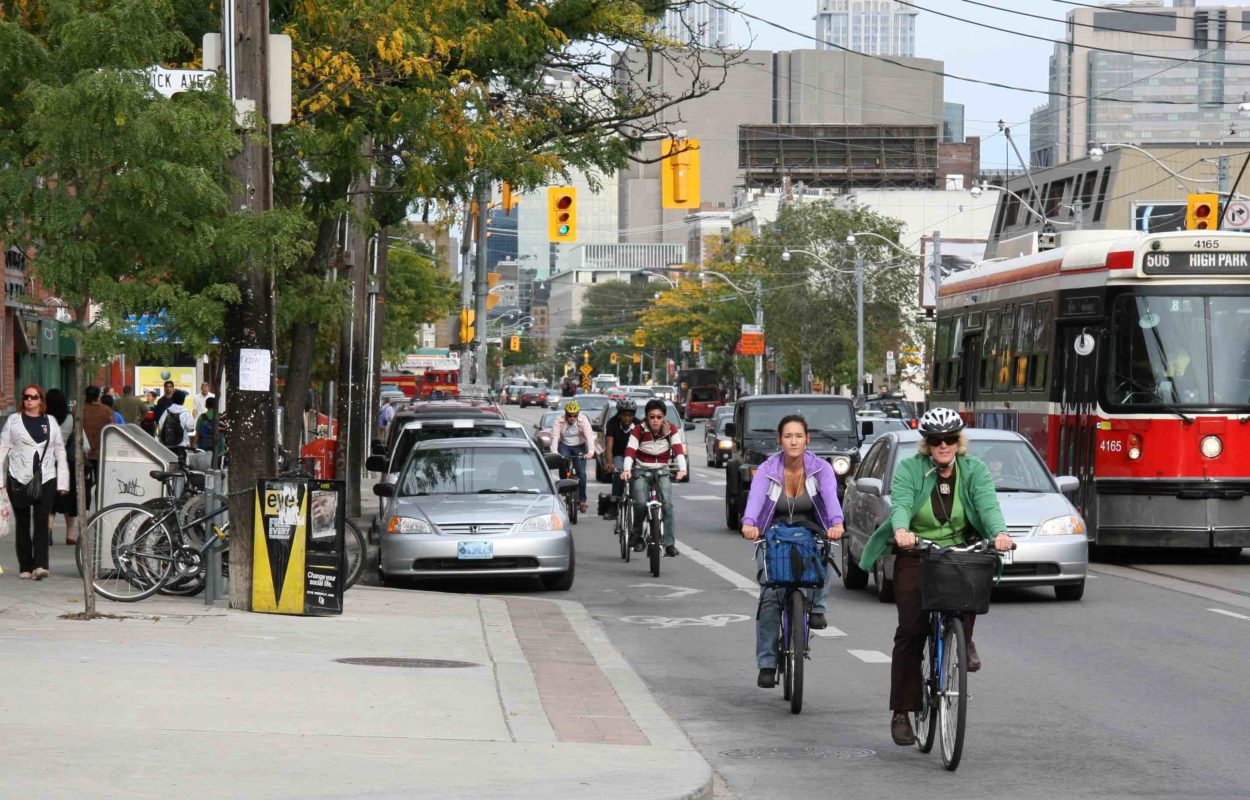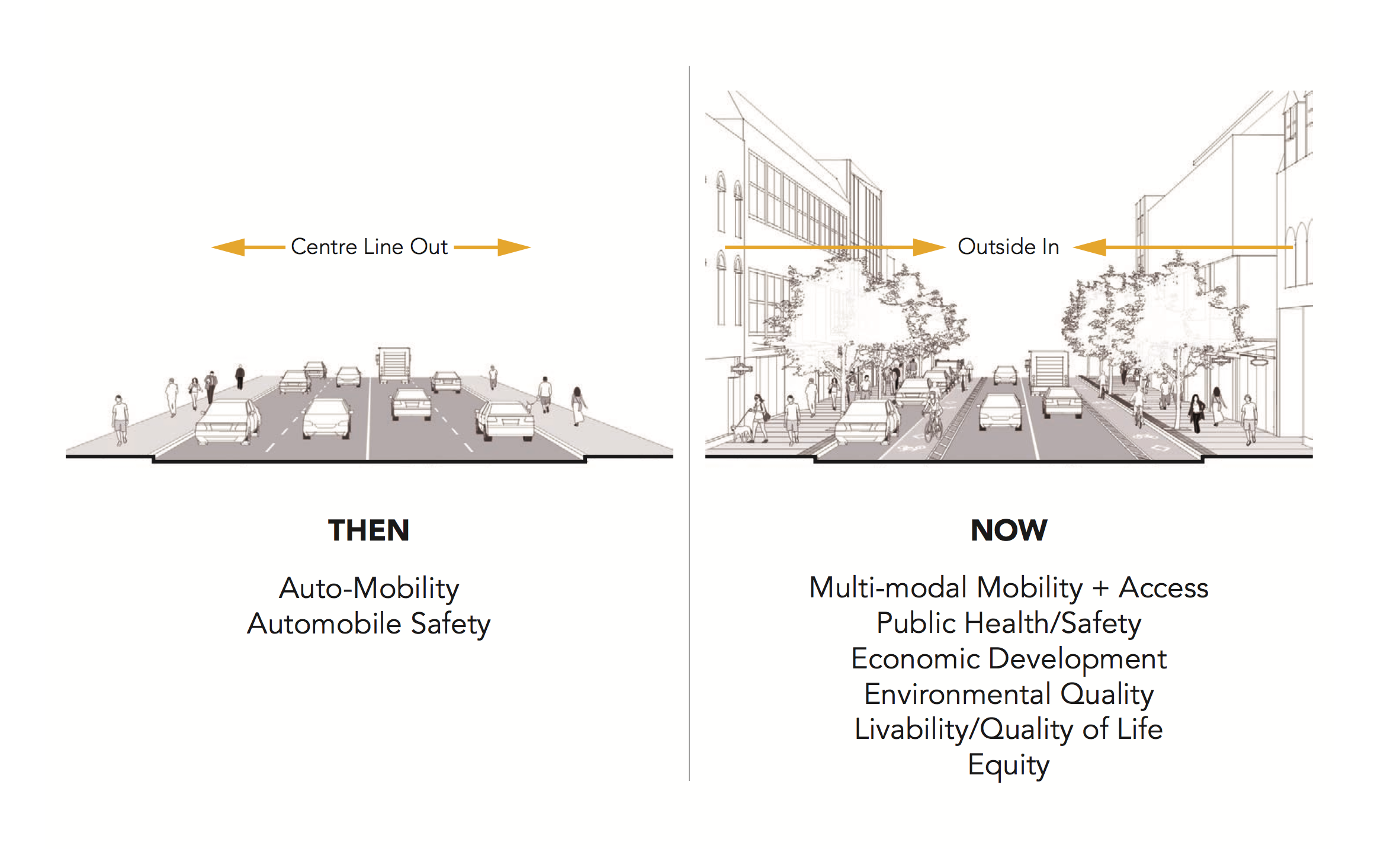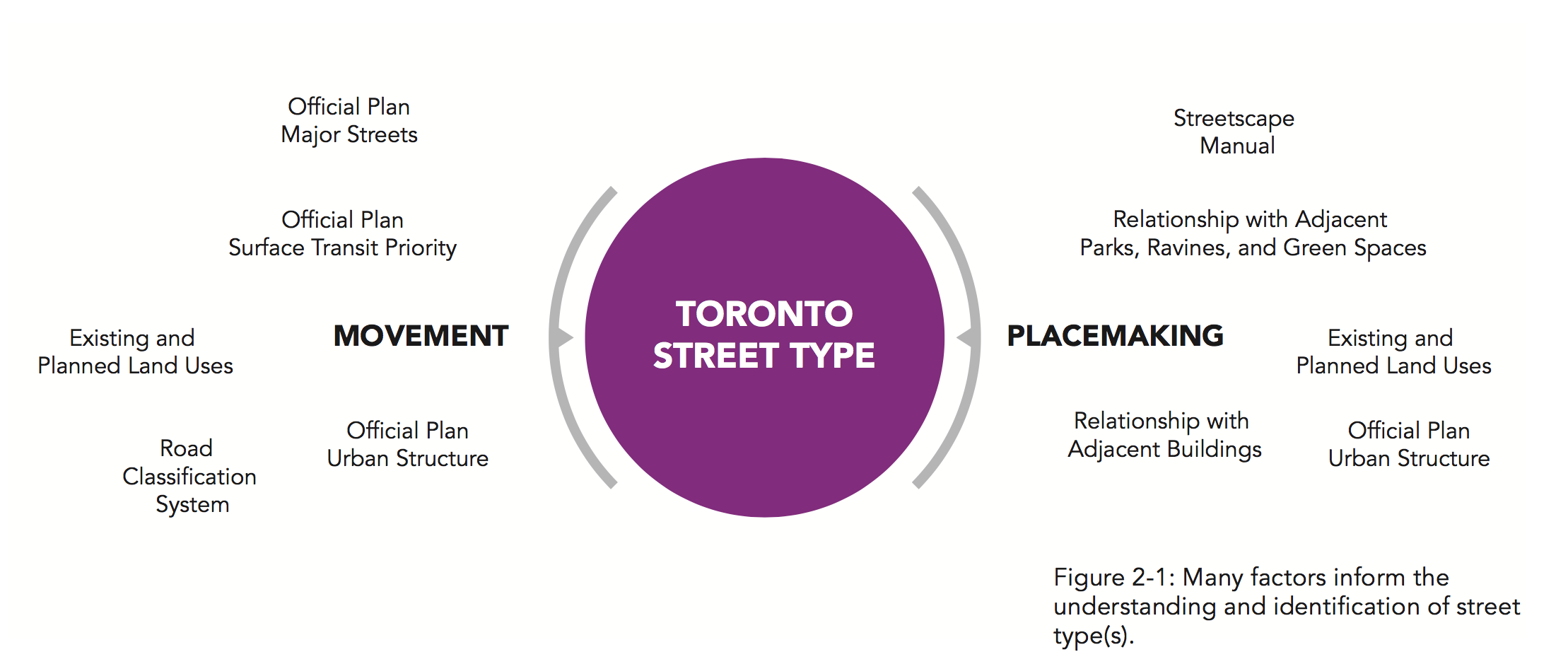
Last week, as the City of Toronto launched its new Vision Zero Road Safety website, another important document that could also have a significant impact on the safety of our streets was released at the same time. The Toronto Complete Street Guidelines has remarkable power to influence street safety and design to help achieve ‘Vision Zero’.
Despite its lack of fanfare, Toronto’s first Complete Streets Guidelines mark an important shift in thinking for how Toronto designs streets that are safe and accessible for road users of all ages and abilities. The Guidelines are an excellent resource help to realise civic goals and create safer, more accessible streets in Toronto.
In 2014, Toronto City Council adopted a Complete Streets Policy within its amended Official Plan. The Guidelines, underway since 2014, took a comprehensive, context-sensitive look at Toronto’s streets and how to design them differently to improve safety and accessibility for all. They were developed using a highly collaborative process involving over 40 City Divisions, Agencies, and Advisory Boards, 37 external stakeholders, and thousands of Torontonians. TCAT’s Director, Nancy Smith Lea, provided input as part of the Stakeholder Advisory Group.
The Guidelines introduce 16 new street types, which are determined based on the interaction of the two fundamental roles a street plays: movement and placemaking. Each new street type comes with key design objectives that address pedestrian amenities, bikeways, materials used, green infrastructure, and vehicle movements. An especially exciting piece is the dedicated section on designing streets for pedestrians. This chapter clearly lays out how pedestrian spaces can be designed to ensure the safety, accessibility, and comfort of people on foot, and will provide some much needed guidance in this area.
The Guidelines could have benefited from a stronger recognition that all goals are not equal. Place-making, prosperity, and transportation are potential positive outcomes of a well-designed street, but ensuring the safety of all users, and particularly vulnerable users, is a top priority.
Overall, this is a strong set of Guidelines that mark a defining moment in seizing the opportunity to re-imagine our city. The City’s next step is to develop an implementation strategy for the Guidelines, including training for staff and contractors involved in street design and delivery.
The City of Toronto joins a number of other Canadian cities in publishing Complete Street Guidelines. Ajax, Halifax, Calgary, Ottawa, London, Edmonton, Waterloo, and York are some of the cities that are taking strides towards building more inclusive, multipurpose, and safe streets.


